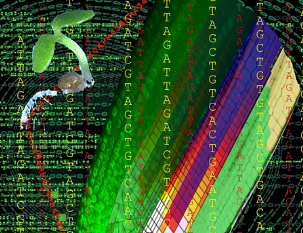A software to understand plants
19 May 2020 | Written by La redazione
A study by La Sapienza in Rome led to the creation of an algorithm capable of making predictions on the behavior of plants

The growth of an organ is a complex process in which the activity of the cells and tissues that compose it must be finely regulated to ensure a functional shape and size. This also applies to plants, of which the mechanisms underlying the formation of roots, stems and leaves are still little known. A study coordinated by the Department of Biology and Biotechnology Charles Darwin of Sapienza in collaboration with the University of Utrecht, and published in the journal Developmental Cell, describes the creation of a computational mathematical model which, reproducing the activity of different genetic networks, is in able to make predictions then verified in vivo.
Understanding a plant. With modern molecular analysis technologies it has been possible to collect a huge amount of data of biological relevance in recent years, but the possibility of integrating them into a model capable of predicting the behavior according to some parameters remains very limited. Knowing in advance whether under certain conditions of the soil, fertilizers or watering, the plant can grow more or less luxuriantly is of no small importance. In the study coordinated by Sabrina Sabatini of the Department of Biology and Biotechnology Charles Darwin of Sapienza, a computational model has been created that is able to exactly reproduce the growth phases of the root of Arabidopsis thaliana, also known as common arabetta. The program is able to predict the behavior of the plant in vivo and in different environmental conditions.
The research. To acquire these results, the researchers identified some of the central molecular circuits in root growth, then using them as parameters for model development. “This work – explains Sabrina Sabatini – is an example of how you can model a complex regulatory system by predicting its outcomes starting from the key parameters. The use of a computational model has allowed us to establish, for example, how the PLETHORA protein (PLT), which is found in large quantities in the stem stem niche, is gradually diluted following the activation of cell division and distributed in undifferentiated cells new generation, where it reaches minimum levels of concentration “.
The researchers subsequently identified the networks active in cell differentiation and their functioning mechanisms: such as the reciprocal inhibitory action of some control molecules, the number of undifferentiated cells of the root and how this process is interrupted.
“Ours – concludes Sabatini – is one of the few dynamic models that incorporates the activity of different genetic networks capable of reproducing the growth of the root in silicon (or on the computer), and can be used to make predictions that can be experimentally tested in vivo” .





